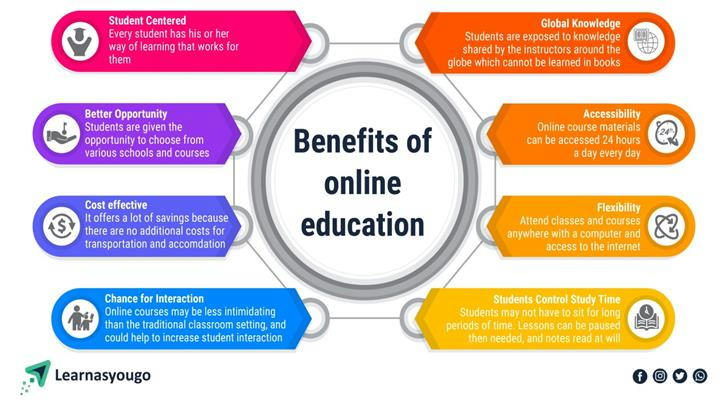Online Courses in the United States: A New Era of Education

In the United States, online courses have become an important part of the education field, providing learners with a flexible and convenient way of learning. This article will explore the current situation, advantages, challenges, and future development of online courses in the United States, and analyze them in combination with specific cases.
Ⅰ. The Current Situation of Online Courses
1. Technological Progress
The advancement of Internet technology, especially the popularity of mobile devices, has made online learning more convenient. Learners can access online courses through smartphones, tablets, or laptops anytime and anywhere.
2. Diversity and Accessibility of Courses
Online courses in the United States cover various fields from basic education to higher education, from vocational training to hobbies, and meet learners with different backgrounds and needs.
3. Certification and Degree
Many American universities and colleges offer online degree programs, which have the same academic status and certification as traditional face-to-face courses, providing learners with more educational opportunities.
Ⅱ. Advantages of Online Courses

1. Flexibility and Convenience
Online courses allow learners to arrange their studies according to their own schedules without worrying about geographical restrictions, which is especially beneficial for learners who work full-time or have family responsibilities.
2. Personalized Learning Experience
Learners can choose courses according to their own learning speed and style, replay video explanations, participate in forum discussions, and even customize their learning paths.
3. Cost-Effective Learning Methods
Compared with traditional campus education, online courses are generally less expensive, saving transportation, accommodation, and living expenses, making higher education more popular.
4. Career Development and Skill Improvement
Many online courses focus on the cultivation of specific skills, such as programming, design, marketing, etc., which helps learners improve their professional skills and increase their employment competitiveness.
Ⅲ. Challenges Faced
1. Learning Motivation and Self-Discipline
Online learning requires stronger self-drive and self-discipline, and the lack of face-to-face interaction and supervision may make it difficult for some learners to maintain learning motivation.
2. Lack of Interactivity and Social Experience
Online courses may lack the interactivity and social experience in traditional classrooms, which is particularly challenging for courses that require teamwork and practical operations.
3. Issues with Certification and Recognition
Although online courses are becoming more and more popular, their certification and recognition are still an issue in some fields and industries, especially in high-end career fields.
4. Technological Barriers and the Digital Divide
Technological barriers and the digital divide may prevent some learners from fully utilizing online course resources, especially for those who are not familiar with technology or lack high-quality internet access.
Ⅳ. Case Analysis: John's Online Learning Journey

John is a busy professional who chose to improve his data analysis skills through online courses. He enrolled in the online course "Introduction to Data Analysis" offered by Stanford University and completed the course after work. Through this course, John not only mastered the basics of data analysis but also applied the learned skills at work and improved his work efficiency. In the end, he obtained a course certificate and was promoted within the company.
Ⅴ. Summary
Online courses in the United States provide learners with a flexible, efficient, and economical learning platform, allowing them to learn according to their needs and pace. With the continuous advancement of technology and the innovation of education models, online courses will continue to play an important role in the global education field. However, in order to ensure the quality and effectiveness of online education, challenges such as learning motivation, interactivity, and certification need to be addressed. Through continuous optimization and innovation, online courses in the United States are expected to provide high-quality educational services to more learners and help them achieve their personal and professional development goals.
